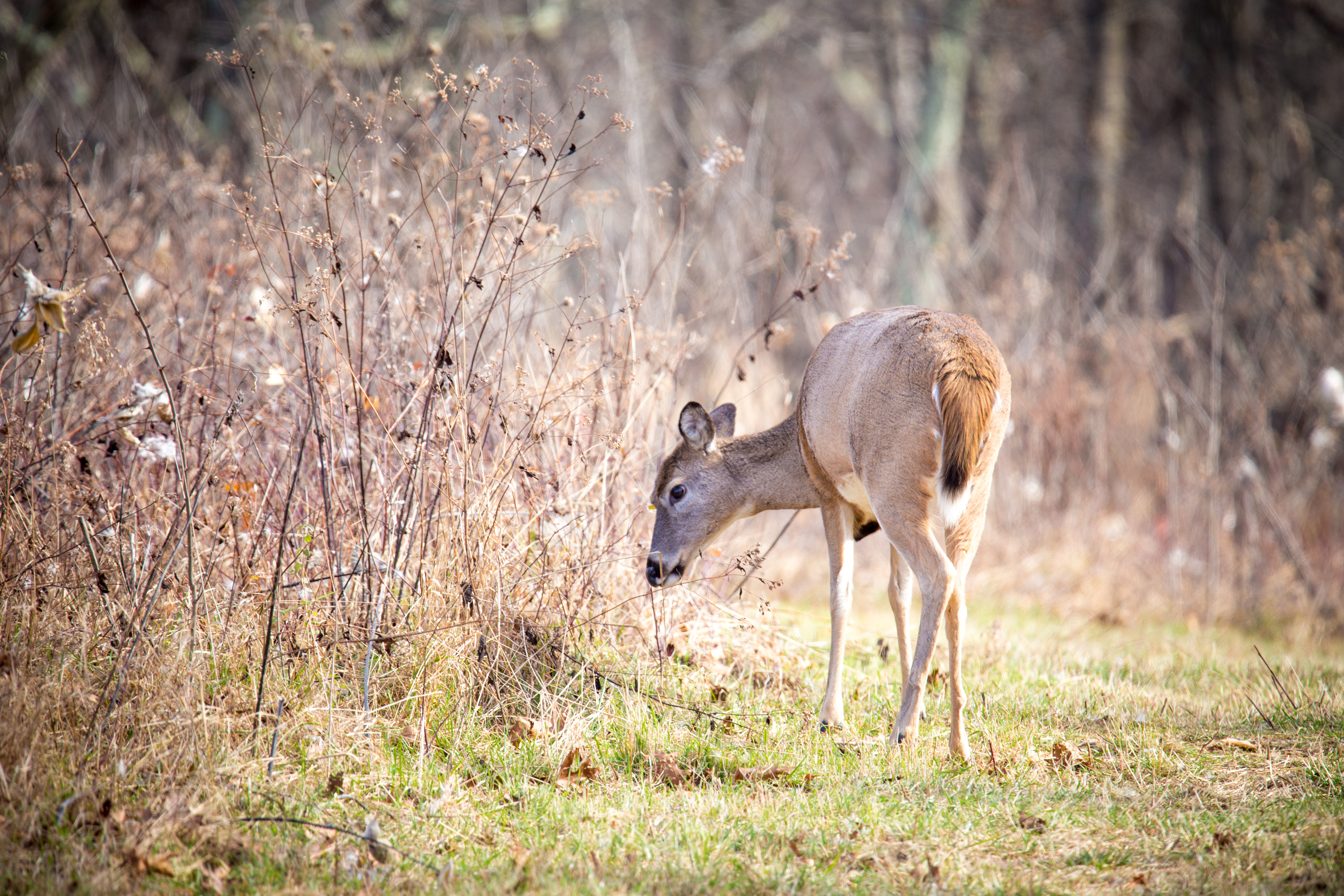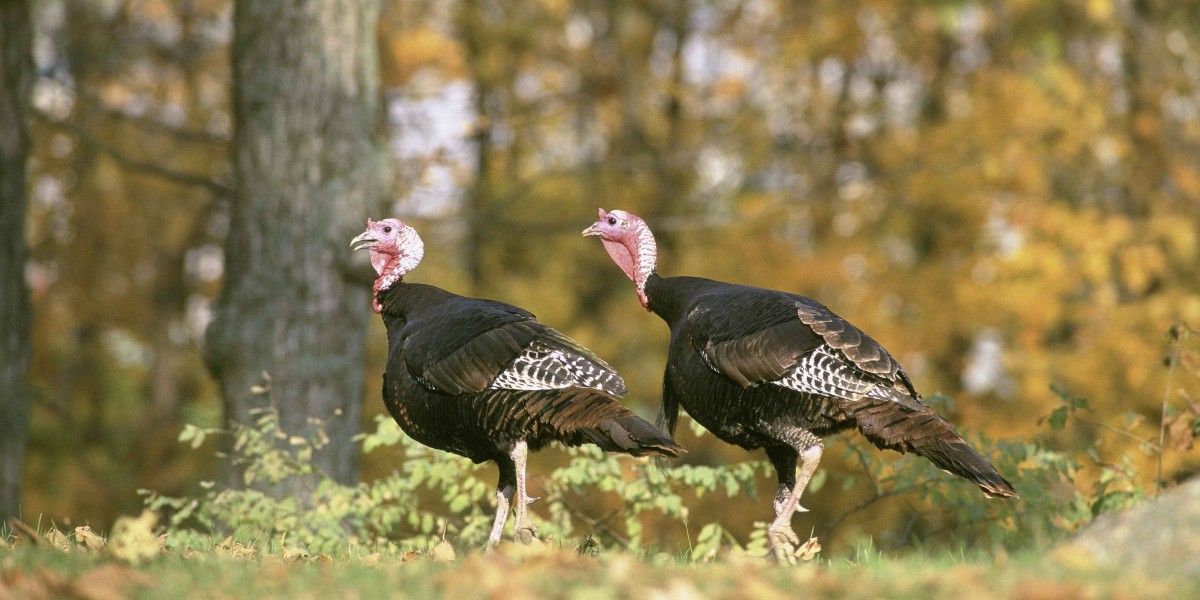Hunters spend plenty of time out in the woods so they are great resources for spotting something abnormal or out-of-place with wildlife. As the various hunting seasons are happening now or soon approaching, extra eyes in the field are always useful to aid with health monitoring for a number of species including white-tailed deer, wild turkeys, black bears, fishers, and more. Here are some common wildlife diseases that may be spotted in the field. Check out the Disease Fact Sheets for more information.
Dermatophilus – Often seen in white-tailed deer. Commonly called Rain Rot, dermatophilus is caused by a fungus that thrives in wet weather. Typical signs include hair loss, matted tufts of hair, and scabs. Dermatophilus is spread by insects, such as biting flies and ticks.
Mange – Common in red fox and sometimes in black bears. Mange is a skin disease caused by microscopic mites burrowing into the skin. Signs include increased hair loss and dry, thickened skin. Sarcoptic mange also causes wrinkling, scabs, and skin crusting from secondary bacterial infections. Mange is often seen in spring.
Winter Tick – A serious problem in some moose populations. Caused by the Dermacentor albipictus tick and includes skin inflammation or irritation, hair loss, itching and excessive grooming behavior. Some moose groom themselves to an extent that the white shafts of hair are all that remains of their coat. These moose are called “ghost moose.”
Avian Pox – Common in a variety of bird species, but most often reported in wild turkeys and crows. Avian pox lesions are wart-like growths that occur on the parts of the bird's body that are unfeathered, including the mouth, larynx, and/or trachea.
Hemorrhagic Disease of Deer (HD) – Epizootic Hemorrhagic Disease (EHD) and Blue tongue (BT) are viruses spread to white-tailed deer by biting midges from the Culicoides genus. Noticeable signs include swollen head, neck or tongue, and weak, approachable deer, usually seeking or nearby water. HD acts quickly, 5 to 10 days incubation and death in under 36 hours. Midge activity is usually stopped after the first hard frost of the year.
Chronic Wasting Disease (CWD) – animals can look healthy for more than a year even though infected and shedding prions in their saliva and excreta. Signs include emaciation, decreased control of body movements and wide-based stances, head tremors, or carrying their head and ears lowered. Affected animals may walk in repetitive courses or be found near water sources or in riparian areas.
For information on CWD testing offered at CWHL, please visit our website at: Hunter Harvest CWD Testing Available at CWHL
Rabies – rabies can affect any mammal species and white-tailed deer are no exception. Rabies is caused by a virus transmitted in saliva. It is seen most often in raccoons, bats, skunks, and foxes. Deer with rabies may act aggressively or be found near water.
White_Tailed_Deer_(23073007566).jpg

Canine Distemper Virus (CDV) – Animals often have discharge from eyes and nose, coughing and neurologic signs. Because CDV often occurs in the same species as rabies, you must treat suspects with extreme caution as some signs are often similar to rabies, approachability, lethargy and listlessness.
If you harvest or trap an animal that appears abnormal, do not handle it. That includes not field dressing the carcass. Please report any sightings of abnormal sick or dying animals to the nearest DEC regional wildlife office. This does not include hunting-related mortality or roadkills.






